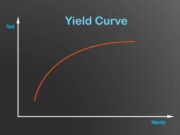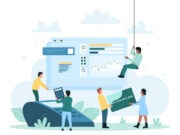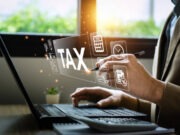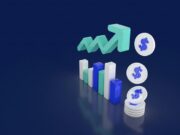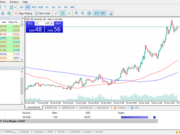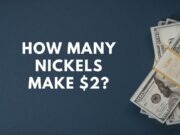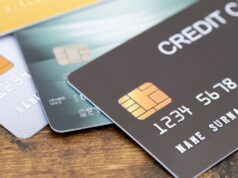What is ‘Tangible Cost’
A quantitative expense that can be traced back to a specific source or item. Tangible costs are expenditures incurred as a result of activities such as acquiring materials, paying staff, and renting equipment.
Explaining ‘Tangible Cost’
A lot of the time, tangible costs are connected with products that also have accompanying intangible costs. An intangible cost is a subjective value put on a scenario or event in an effort to quantify the consequences of that circumstance or event.
Consider the expenditures involved with a consumer who has received damaged product, as an illustration of the point. In most cases, the corporation will reimburse the consumer for the value of the goods after incurring a measurable expense. If the consumer is still dissatisfied with the outcome, he or she may inform his or her social circle about the bad service. When the friends learn about the complaints, they may experience a possible loss of sales, which comprises of an intangible cost associated with the damaged item.
Tangible Cost FAQ
What is the difference between tangible and intangible benefits?
Tangible advantages are those that can be measured and quantified. They are used in the evaluation of the worth of a job. Intangible advantages are derived from a person’s overall attitude about their employment. Job satisfaction is a primary criterion for determining the value of an intangible benefit.
Which of the following is an example of intangible cost?
Any expense that is difficult to define is classified as an intangible costs. Customer happiness, productivity, staff morale, reputation, and brand value are just a few examples of what may go wrong.
What are tangible and intangible costs?
Tangible expenses are those that are immediately seen and that you must pay for, such as office equipment, personnel wages, and training. Intangible costs include the time it takes for your employees to master a new computer system and to change their work practices to accommodate the new technological environment.
What is a tangible example?
Physical property and equipment (PP&E), furniture, computers, and machinery are examples of physical assets. Additionally, businesses may have intangible assets, which are assets that are not tangible in nature. Examples of intangible assets include goodwill, patents, and copyrights.
What are examples of intangible benefits?
Intangible advantages include things like brand recognition, consumer loyalty, and staff morale, to name a few. Companies that overlook intangible advantages have a poor track record over time, but those who make an effort to nurture them prosper.
What is the difference of tangible and intangible?
Tangible assets are tangible items, such as cash, merchandise, cars, equipment, buildings, and investments. Tangible cost are also known as tangible assets. Intangible assets are those that do not have a physical representation and include items like as accounts receivable, pre-paid costs, patents, and goodwill.
What are examples of tangible benefits?
Investments in computer software and hardware, as well as the price of running a system, are examples of tangible costs. The benefits of information systems may be both concrete and ethereal in their nature. Real-world examples of concrete advantages include expense savings and revenue increases.
Is Depreciation a tangible cost?
Depreciation is applied to tangible assets. When a physical asset’s cost is allocated over the period of its useful life, this is known as depreciation. The useful life of an asset is the period of time during which it gives value to your company. In most cases, assets lose their value within a year.
What are examples of intangible costs?
Any expense that is difficult to define is classified as an intangible cost. Customer happiness, productivity, staff morale, reputation, and brand value are just a few examples of what may go wrong. Firms that make choices only on the basis of tangible costs run the danger of incurring long-term financial losses as a result of intangible costs.
What is an example of an intangible?
Intangible assets include goodwill, brand recognition, and intellectual property, which includes patents, trademarks, and copyrights, among other things. There are physical and intangible assets, which are distinguished by the fact that they do not contain land, cars, equipment, or inventories.
What are intangible benefits of information systems?
Increases the level of openness and accountability in the company. Access to accurate and timely data is essential for making timely choices.
How are intangible costs and benefits calculated?
Comparative analysis is a method that may be used to quantify intangible advantages by comparing them to comparable benefits or intangible assets with fixed values. It is particularly effective for measuring the value of intangible benefits. This approach is particularly useful for assessing the value of a company’s assets as part of the process of establishing its net worth.
Further Reading
- Revalued financial, tangible, and intangible assets: Associations with share prices and non-market-based value estimates – www.jstor.org [PDF]
- The tangible cost implications of a hospital outbreak of multiply-resistant Salmonella – www.cambridge.org [PDF]
- Value network analysis and value conversion of tangible and intangible assets – www.emerald.com [PDF]
- Tangible and intangible sunk costs and the entry and exit of firms in a small open economy: the case of Austria – www.tandfonline.com [PDF]
- A framework for assessing “tangible” and “intangible” impacts of events and conventions – www.ingentaconnect.com [PDF]
- Does corporate social performance yield any tangible financial benefit during a crisis? An event study of Lehman Brothers’ Bankruptcy – link.springer.com [PDF]
- Does R&D spending boost tangible investment? An analysis on European firms – www.tandfonline.com [PDF]



